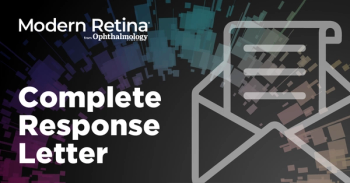
Is deep learning the future of diabetic retinopathy screening?
Deep learning could have an application in the diagnosis and management of retinal diseases. Here’s what clinicians need to know.
Deep learning, a type of
It does, however, appear that deep learning could have an application in the diagnosis and management of retinal diseases. A number of studies have demonstrated the accuracy of deep-learning algorithms in diagnosing diabetic retinopathy and diabetic macular edema from fundus photographs.1, 2
Most recently, a study from Gulshan et al published in JAMA Ophthalmology assessed the performance of a deep-learning algorithm versus manual grading for diabetic retinopathy in India.3
The prospective, observational study included a little more than 3,000 patients age 40 or older with diabetes from two tertiary eye care centers. Patients were excluded if they had a history of any intraocular surgery other than cataract surgery, ocular laser treatments for retinal disease, ocular injections for diabetic macular edema, or a history of other retinal vascular diseases or glaucoma.
The automated, deep-learning grading system was compared against manual grading by a trained grader and a retinal specialist from each center. A panel of three retinal specialists adjudicated any disagreements between the retinal specialists and trained grader, when needed.
RELATED:
Study results
The automated deep-learning system was able to correctly identify referable diabetic retinopathy with equal or better accuracy than the retina specialists and trained graders. Importantly, the results were consistent across both eye care centers.
On the combined dataset, the sensitivity and specificity of the manual graders ranged from 73.4% to 89.8% and 83.5% and 98.7%, respectively. Similarly, the deep-learning system ranged from 88.9% to 92.1% and 92.2% to 95.2% for sensitivity and specificity, respectively.
The researchers argue that their work demonstrates the potential of using an automated grading system for the diagnosis of diabetic retinopathy and diabetic macular edema.
If proven successful, deep-learning technology could make screening for retinal diseases more cost-effective and efficient.
A commentary from Ting DSW et al. in the same issue of JAMA Ophthalmology noted the value of testing deep-learning algorithms in the real-world setting, especially in lower-resource countries such as India. India has one of the largest burdens of diabetes in the world. More than 60 million people are at risk for developing diabetic retinopathy, yet the country lacks a unified strategy for screening and has a shortage of trained eye care specialists.3 An automated system could help scale screenings and bridge the workforce gap.
RELATED:
Although using deep learning in the retinal space seems possible, and perhaps practical in some settings, Ting et al stress the importance of evaluating automation in a clinical research setting and in the United States before deploying it in the clinic. There’s also physician intuition and experience at play that cannot be replaced by automation.
For example, in a commentary for the American Academy of Ophthalmology 2019 Retina Subspecialty Day, Tien Yin Wong, MBBS, noted that the diagnosis of diabetic macular edema requires accurate interpretation of OCT screenings in addition to retinal photographs.4
This requires specialized knowledge and expertise, and it’s unclear if a machine is capable of replicating the entire process.
Finally, healthcare professionals must develop a strategy to manage false negatives before the technology is ready for prime time.
Deep learning may have several challenges to overcome before it becomes a mainstay in the clinic, but one thing is for certain: artificial intelligence in medicine is here to stay.
RELATED:
Disclosures:
1. Gulshan V, Peng L, Coram M, et al. Development and Validation of a Deep Learning Algorithm for Detection of Diabetic Retinopathy in Retinal Fundus Photographs. JAMA. 2016;316(22):2402-2410.
2. Ting DSW, Cheung CY, Lim G, et al. Development and Validation of a Deep Learning System for Diabetic Retinopathy and Related Eye Diseases Using Retinal Images From Multiethnic Populations With Diabetes. JAMA. 2017;318(22):2211-2223.
3. Gulshan V, Rajan RP, Widner K, et al. Performance of a Deep-Learning Algorithm vs Manual Grading for Detecting Diabetic Retinopathy in India. JAMA Ophthalmol. 2019.
4. TY W. Artificial Intelligence for Diabetic Retinopathy Screening American Academy of Ophthalmology Retina Subspecialty Day. San Francisco, California 2019.
Newsletter
Keep your retina practice on the forefront—subscribe for expert analysis and emerging trends in retinal disease management.
















































